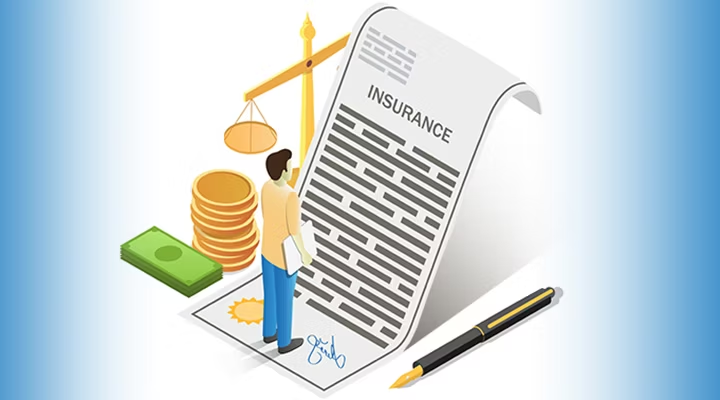How Can You Turn Term Life into a Lifelong Financial Ally?

Term life insurance’s potential as an advanced, long-term financial partner is badly weakened by the common idea of it as only a short-term financial safety net. Innovative financial advisors understand that term life insurance, when skillfully designed through careful planning and professional execution, surpasses its apparent drawbacks to become a vital component of your overall wealth management portfolio, meeting your family’s changing needs from the beginning of your career to retirement and estate planning stages.
It is necessary to give up traditional thinking and accept imaginative ways that enhance term life insurance’s specialized benefits while limiting its perceived downsides in order to understand how to turn it into a lifetime financial partner. The first step in the process is understanding that the short-term nature of term life insurance is a plus that allows for previously unheard-of freedom in financial planning, not a drawback.
Mastering Term Life Insurance Through Dynamic Financial Architecture
Expert wealth managers are aware that the key advantage of term life insurance is not its stability but rather its amazing capacity to change and grow with your rising financial state. Because of its flexibility, term life insurance is the right starting point for a dynamic financial plan that may be updated as your requirements, goals, and circumstances change over the course of your lifetime.
Understanding term life insurance’s role in your wider financial environment is the first step towards implementing it intelligently as a lifetime partner. Term life insurance should work in harmony with your financial assets, retirement planning, tax strategies, and estate planning goals rather than acting as a stand-alone insurance product. This all-encompassing method ensures that your term life insurance actively helps your overall financial success in addition to offering security.
Take into mind term life insurance’s freedom in limiting your coverage amounts. You may tailor your coverage to properly meet your current financial obligations, with choices ranging from $25,000 for basic protection to $3 million for total family security. This scalability ensures that your security is effectively linked with your genuine demands rather than being limited into set levels as your income grows, bills fall, and family situations change.
Several term lengths (10, 15, 20, 30, and 40 years) are given, giving additional strategy possibilities. Multiple term life insurance with varied end dates can be linked together to create a personalized coverage plan that slowly lowers as your obligations naturally go down over time.
Engineering Term Life Insurance for Multigenerational Wealth Building
Term life insurance’s affordability advantage offers great possibilities for intergenerational wealth building that go substantially beyond the benefits of standard insurance. By carefully channeling the huge premium savings over permanent life insurance plans to high-growth investment vehicles, it may be possible to create wealth that greatly outpaces the potential cash value of whole life insurance.
Professionally referred to as “buy term and invest the difference,” this wealth-building method turns your selection of term life insurance into a difficult financial engineering project. A broad wealth portfolio may be formed while keeping important family protection by utilizing the price savings from buying term life insurance over whole life insurance to finance maximum contributions to 401(k) plans, IRAs, taxable investment accounts, or even real estate investments.
Professional portfolio management and strict performance are important for success. Instead of being used to support living demands, the monthly payment difference between whole life and term life insurance must be constantly invested. When utilized effectively, this method often leads to a substantially larger buildup of net worth than permanent insurance solutions.
Expert financial counselors suggest applying the tried-and-true income replacement method to choose the best term life insurance: improve your yearly pay by ten to fifteen times to create your earning replacement base. To get your ideal coverage level, add your mortgage debt to ensure home stability, throw in expected future demands like your children’s education, and lower your existing savings and assets.
Leveraging Term Life Insurance Advanced Conversion Strategies
One of the most popular methods for building long-term insurance relationships is the conversion option included in many term life plans. Regardless of any health deterioration over time, convertible term life insurance plans protect your insurability by allowing you to turn your brief coverage into permanent life insurance without medical underwriting.
As you age older and face greater statistical health risks, this change right increases worth. When permanent protection becomes more fit for your financial circumstances and estate planning goals, term life insurance bought when you are still healthy can be wisely changed to whole life policy.
Conversion time involves a careful examination of a number of issues, including as your financial circumstances, estate planning needs, market situations, and health status. In order to build a hybrid strategy that maximizes both cost and coverage goals, many convertible term life plans feature partial conversions, letting you to keep some term coverage while switching a portion to permanent insurance.
Understanding the specific conversion possibilities that are available under your insurance is another element of advanced conversion processes. You can choose the best permanent coverage type based on your changing needs and the status of the market at the time of conversion with some term life plans that provide conversion to multiple permanent insurance products.
Implementing Term Life Insurance Renewal Optimization Techniques
With proper renewal management, renewable term life insurance products offer yet another unique option of having everlasting protection. This provision offers ongoing coverage availability even if your health seriously deteriorates, even when renewal premiums climb in step with your achieved age.
Comparing renewal rates to new insurance applications on a daily basis is part of professional renewal optimization. Sometimes, new term life insurance is more cheap than renewing an old policy due to changes in the market, health breakthroughs, living improvements, or the removal of risk factors like smoking.
In addition to premium price, the renewal decision-making process should combine coverage features, transfer possibilities, and insurance companies’ financial strength ratings. Instead of concentrating merely on the lowest possibilities, there are occasions where somewhat higher rates for additional policy features or higher insurance company reviews offer superior long-term value.
Creating Term Life Insurance Legacy Integration Systems
When term life insurance is linked with complete legacy planning tools, it eventually becomes a long financial ally. This includes seeing your term life insurance as a key component of your intergenerational wealth transfer plan rather than as a stand-alone insurance coverage.
Professional legacy integration takes into account the way in which term life insurance combines with estate planning objectives, retirement planning, tax optimization methods, and charity giving goals. Term life insurance’s death benefit might be used to pay estate taxes, divide inheritances among heirs, or support charity bequests while saving other family assets.
Within your overall estate plan, unique legacy choices also take term life insurance’s tax effects into mind. In contrast to other assets that could have large tax effects upon transfer, term life insurance is an ideal wealth transfer tool because death payments are usually paid by recipients tax-free.
Optimizing Term Life Insurance Through Professional Portfolio Integration
Professional portfolio integration, which studies your coverage as a component of your whole financial portfolio rather than a stand-alone insurance purchase, is the last step in making term life insurance into a lifetime friend. This method ensures that the choices you make with term life insurance are in agreement with your risk management goals, retirement objectives, tax planning, and investment plans.
In order to make sure that protection levels, premium price, and policy features continue to support your growing financial goals throughout your lifetime, quarterly portfolio reviews should assess how your term life insurance fits into your moving financial picture.





